19 September 2025
How to Improve Click-through Rate (CTR) of Amazon Ads
TweetLinkedInShareEmailPrint Click-through rate (CTR) is one of the most important performance metrics for yo...
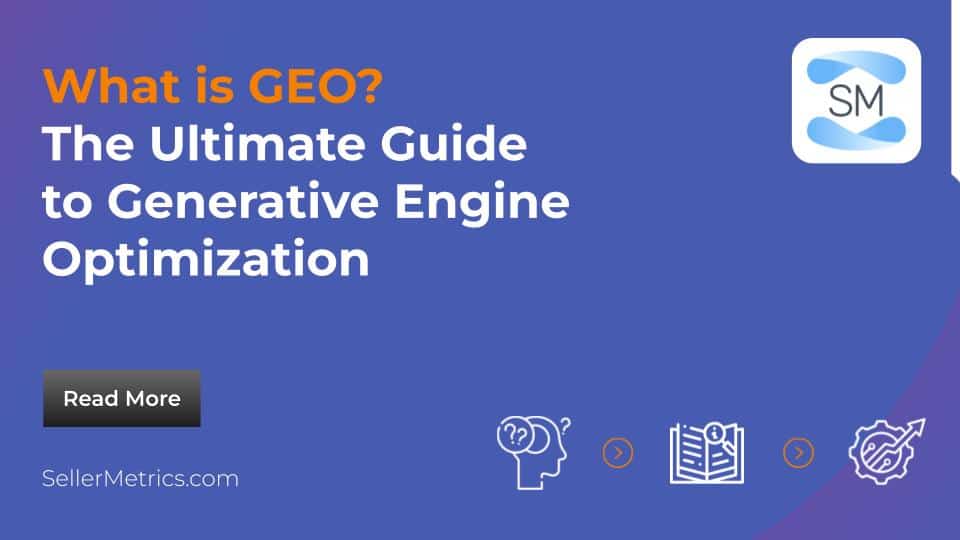
For more than twenty years, the rules of online visibility were written by search engines like Google. The process was straightforward: a user enters a query, gets a list of blue links, and clicks to find information. This gave birth to Search Engine Optimization (SEO), the practice of helping websites rank higher and capture that valuable traffic. If you’re asking what GEO is, or Generative Engine Optimization, you’re looking at the next evolution of this digital landscape, driven by the rise of artificial intelligence.
The introduction of large language models (LLMs) has fundamentally altered how we find answers. Platforms like Google’s Search Generative Experience (SGE), Bing Chat, and Perplexity.ai now deliver direct, conversational answers instead of just links. Moreover, these “Generative Engines” pull information from numerous sources and synthesize it into a single, comprehensive response. While this is faster for users, it means they might never need to click through to the websites that provided the information, creating a new challenge for businesses and content creators.
Article Contents

Traditional SEO is about climbing the ranks. You measure success by appearing in the top ten search results. However, in this new era of generative search, visibility goes beyond rank; AI systems cite, quote, and reference your content directly in their answers. So, let’s clarify the core definition.
Generative Engine Optimization (GEO) is the set of strategies and content practices used to ensure your material is picked up, cited, or referenced by AI-driven search/generative systems. It’s about more than traditional SEO—ranking in search results—it focuses on being part of the AI responses themselves.
Instead of just aiming to be on page one for Google, you want your content to show up inside AI-answers: as cited sources, summaries, direct knowledge, or recommendations.
Large Language Models (LLMs) are being embedded into search, chat tools, and knowledge assistants. Hence, users expect direct answers without having to click many links. These changes shift how content is discovered and rewarded.
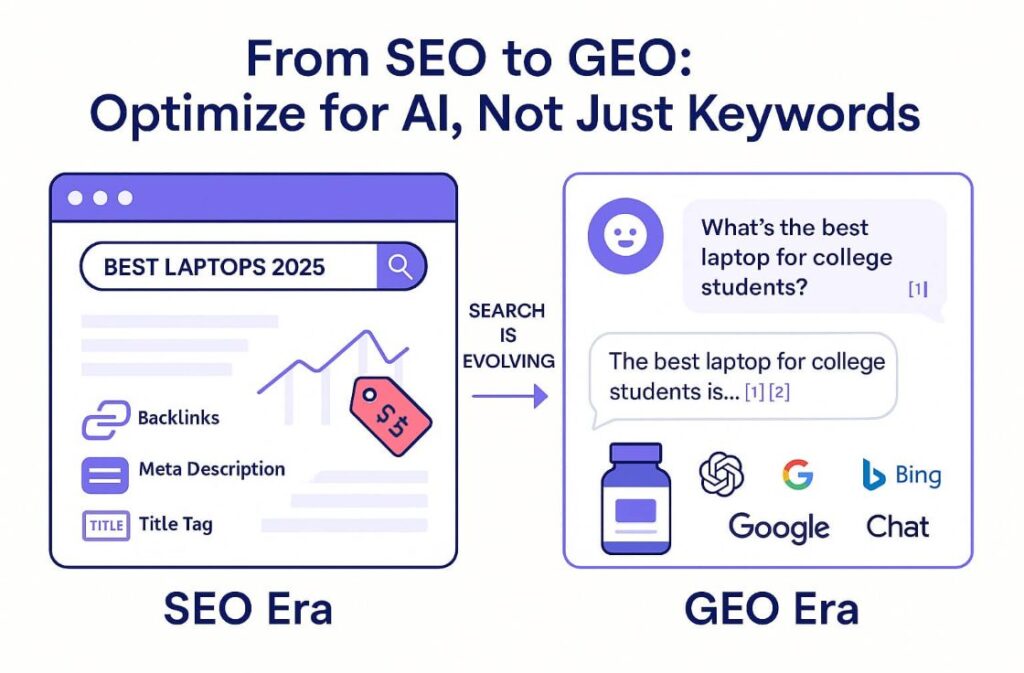
To fully understand GEO, we must look back at how digital search used to work—and how things have shifted.
These trends contribute to the shift toward what is GEO: optimizing content to fit into AI-driven discovery paradigms, not just traditional search rankings.
While GEO and SEO share the goal of increasing online visibility, their methodologies and focus areas are distinct. A common question is how this differs from traditional SEO. Hence, understanding the nuances is key to grasping what GEO truly represents.
| Aspect | Traditional SEO | Generative Engine Optimization (GEO) |
| Focus | Ranking on search engines (Google, Bing) | Being cited/used in AI-generated summaries and answers |
| Metrics | Keyword position, backlinks, impressions, clicks | Citation frequency, whether content is used in answer output, and placement in AI answers |
| Content style | Often keyword-dense, link-focused, optimized for SERPs | Structured, conversational, authoritative, with clear sources and E-E-A-T signals |
| User queries | Keyword/short queries | Natural language, conversational, question/answer format |
| Long-term vs short-term | Builds over time via backlinks, domain authority | Requires agility—content clarity, freshness, context matter, and AI visibility matter. |
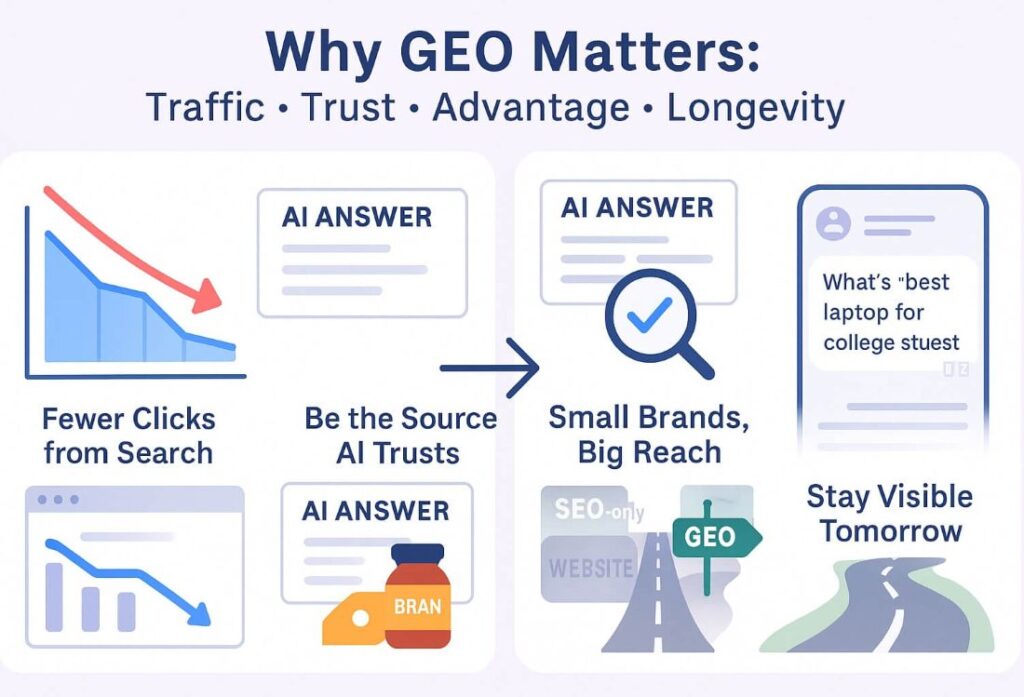
Understanding what GEO is isn’t just a technical exercise—it has real business implications.
Future-proofing content strategy: As more search functionality becomes generative, content not optimized for GEO risks becomes invisible. Adapting now can give longevity to content efforts.

To optimize for GEO, you have to think like an AI engine. They scan and retrieve content from multiple sources, then synthesize it into a coherent response. Also, the decision of which sources to include is based on a new set of signals. To truly master the craft, you must understand that the essence of what GEO is is aligning your content with what these new engines value.
Does your content directly and comprehensively answer what the user is asking? AI systems favor sources that precisely match the user’s intent, not just those that have keyword overlap.
Well-structured content—with clear headings (H2, H3), subheadings, bulleted lists, and short paragraphs—makes it easier for an AI to parse and extract key information. Using Q&A formats is particularly effective.
This foundational Google concept, E-E-A-T (Experience, Expertise, Authoritativeness, Trustworthiness), is even more critical for GEO. Furthermore, engines need to trust your content, which is demonstrated through author bios, clear sourcing of claims, external authoritative links, expert quotes, and original data.
Content that backs up claims with hard numbers, statistics, and data points is highly valued. In addition, these factual elements are easy for an AI to extract and present as evidence to support its generated answer.
Up-to-date information is crucial. An AI model is designed to avoid providing outdated advice. Therefore, ensuring your facts are verified and your content is regularly updated reduces the risk of being outranked by newer, more accurate sources.
An AI crawler must be able to access, render, and understand your content easily. This means a clean site structure, fast page speed, mobile-friendliness, and the use of structured data (Schema.org) are still fundamentally important.


To win at GEO, you’ll need to adapt both content creation and site structure. Here are well-supported methods:
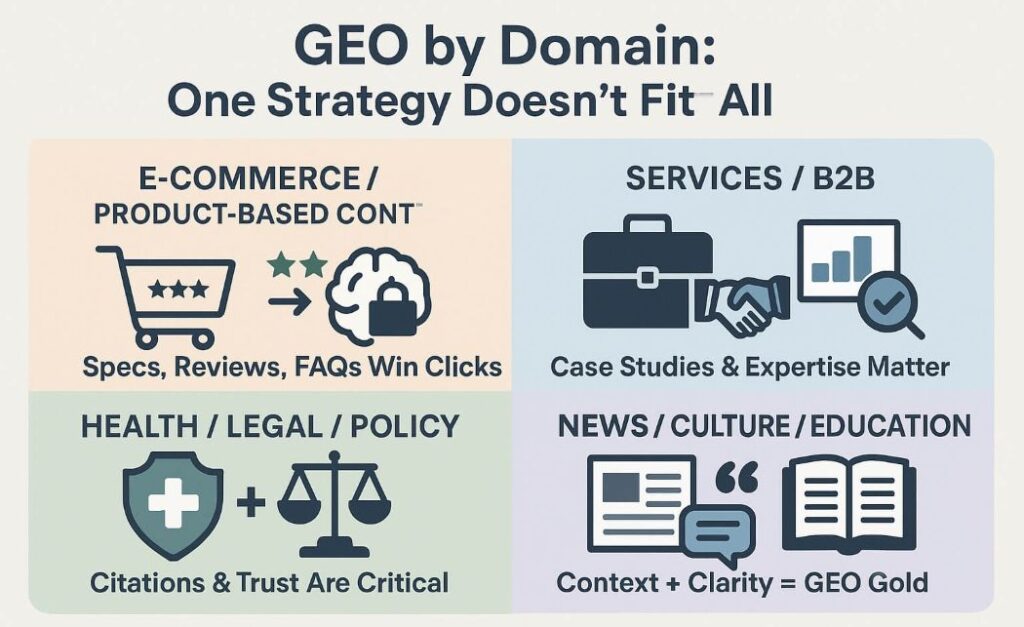
Different fields/industries will benefit from different GEO optimizations:
If you’re convinced that What is GEO is central to your content future, here’s a plan to implement GEO in your strategy.
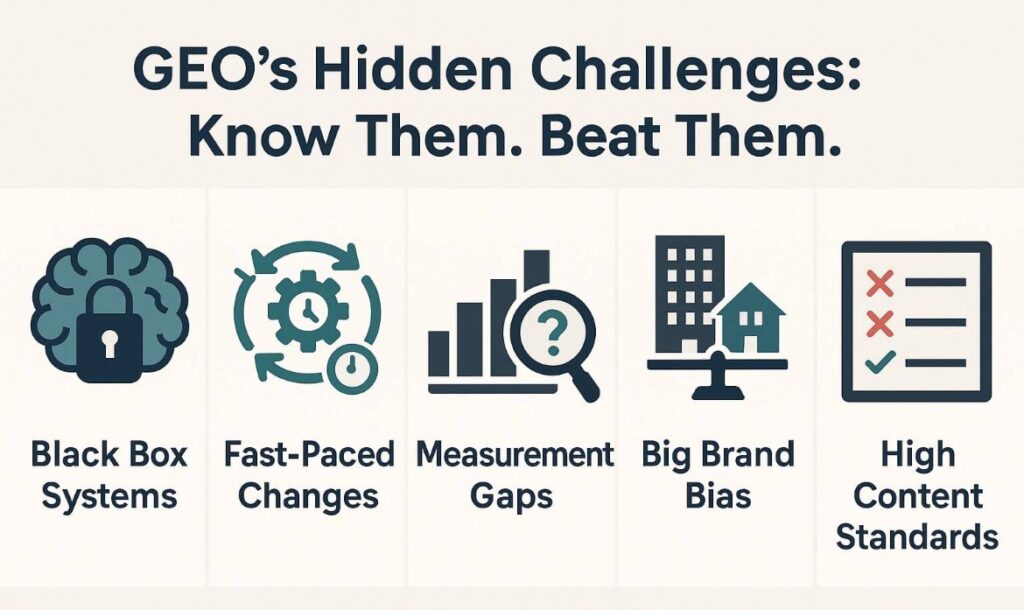
GEO promises big benefits, but it’s not without difficulty. Recognizing challenges helps you plan better.
GEO isn’t some distant trend—it’s already reshaping how people discover information. If your brand or content isn’t yet optimized for generative engines, you risk losing visibility even if your SEO looks strong. But the good news is that by understanding what GEO is and putting proven methods into practice, you can secure new channels of visibility and influence. Ready to take control of your discovery in the AI era? Contact SellerMetrics today to audit your content, uncover opportunities for GEO optimization, and ensure your brand becomes a trusted, cited source in generative engine responses. That’s why, don’t be left behind—elevate your content presence with SellerMetrics now.
GEO stands for Generative Engine Optimization. It is the practice of optimizing digital content to be featured and cited in the answers created by AI-powered search engines. Additionally, the goal is to become a trusted source for platforms like Google’s AI Overviews and Bing Chat. It’s the key to understanding what GEO is in practice.
In business contexts, GEO means ensuring your content, brand, and data are seen and trusted by AI-powered tools and platforms. Also, it’s about crafting information that these systems will use when answering customer questions. This can lead to improved reach, authority, and potentially new conversion channels driven by AI discovery.
SEO (Search Engine Optimization) focuses on ranking in traditional search engines, using keywords, backlinks, and other classic factors. On the other hand, GEO shifts that focus on being cited or used in AI-generated answers and conversational search formats. The two overlap and support one another but require different content styles and priorities in structuring, sourcing, and clarity.
No, GEO is not replacing SEO but augmenting it. Traditional SEO still drives a lot of web traffic and remains vital for many discovery cases. GEO is simply becoming a parallel, increasingly important strategy as AI-driven search grows in usage.
Any business that relies on content for visibility—publishers, SaaS companies, e-commerce stores, B2B service providers—will benefit. However, smaller or niche players can gain a disproportionate advantage, as GEO prioritizes content quality and clarity over legacy signals like domain authority, leveling the playing field. The fundamentals behind what is GEO empower quality over quantity.
Gains can begin within weeks for well-structured, under-optimized content, especially when low competition exists for certain queries. Also, consistent improvements appear over months as your content gets cited and trust builds. It depends heavily on content quality, domain authority, and how fast you adapt your strategy.
Yes, backlinks remain a signal of authority and trustworthiness, which generative engines often use behind the scenes. But they matter less as the sole factor; content clarity, correct sourcing, fresh data, and being structured for AI use are often just as important, if not more.
Absolutely. A strong SEO foundation—fast site, good on-page practices, useful keywords—supports GEO efforts. Applying GEO techniques enhances your chance of not only ranking well but also also being chosen by AI systems to appear in conversational responses. Together, they maximize your reach across traditional and emerging search surfaces.